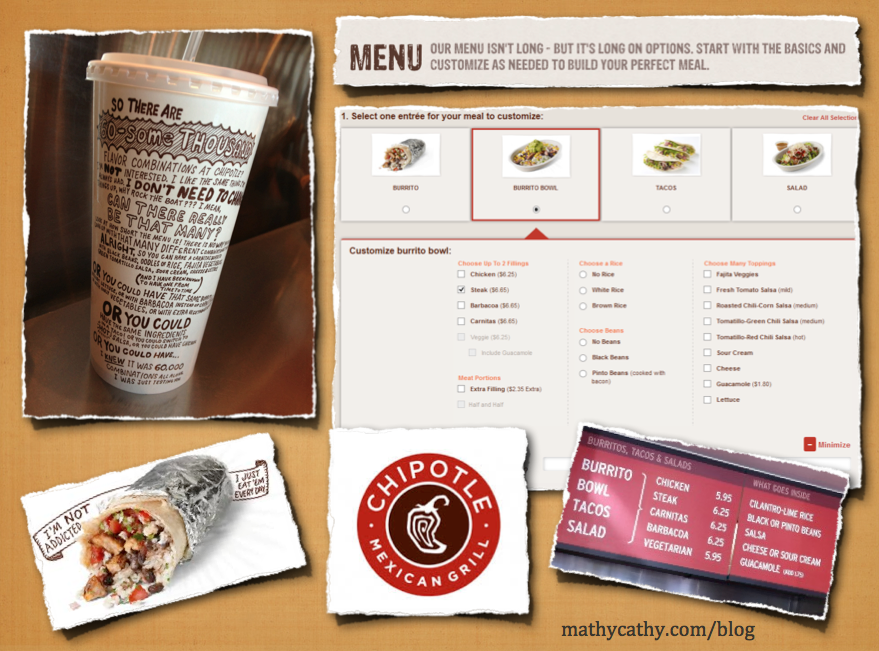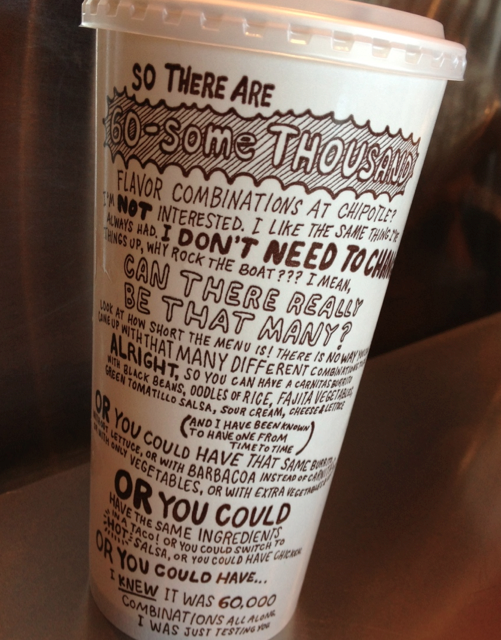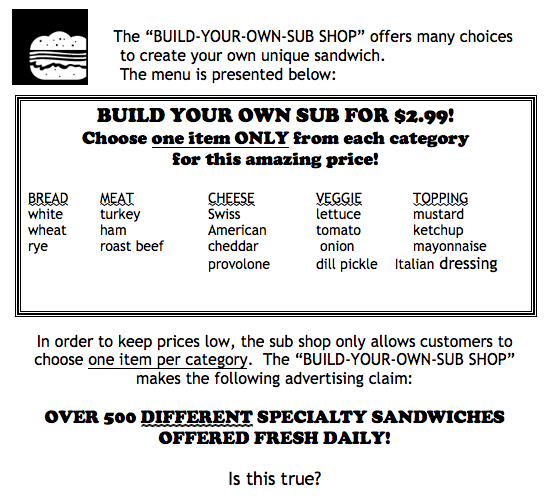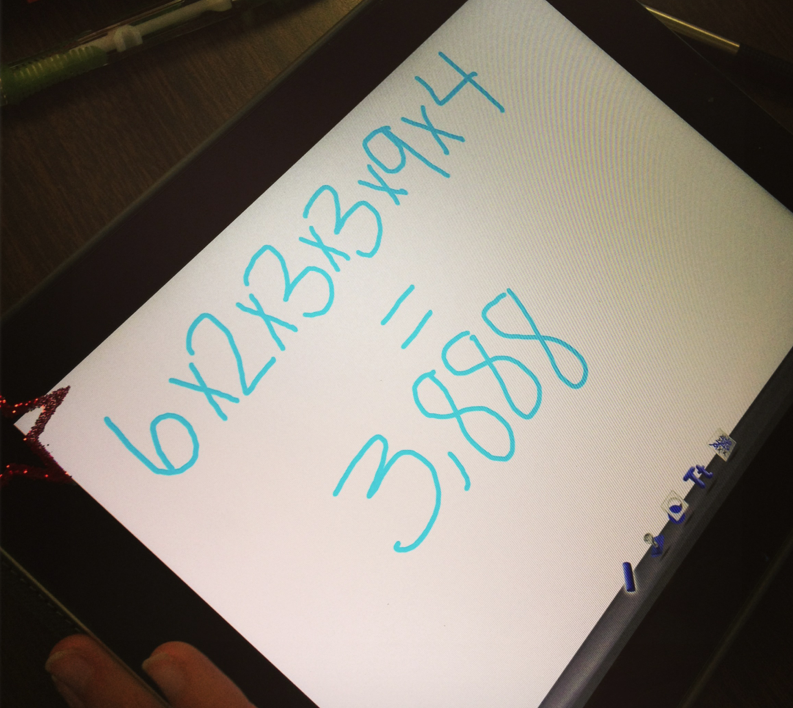Several weeks back, I had the pleasure of eating at Chipotle and consuming every bite of my usual chicken burrito with white rice, black beans, fresh tomato salsa, and “a little bit of cheese and sour cream”… and then I noticed the cup containing my beverage with a beautiful counting principle claim that there are “60-some thousand flavor combinations at Chipotle”.
I posted the cup picture on Twitter as a teaser, and my brother, who is a Chipotle aficionado, immediately chimed in, sending me a screenshot of the menu he sees when placing his daily lunch order online. He sent the menu image because it was much more comprehensive than the menu typically displayed in the restaurant. I could see a math story unfolding, so I created a Keynote slide with images of my cup, a Chipotle menu as displayed in the restaurant, and the online menu image my brother sent to me.
Enter 8th grade students who are ready to learn about the Counting Principle.
To assess prior knowledge on the spot, I asked students to solve a simpler problem that I fabricated. They clearly had an understanding of the topic, and decided the claim made by the “Build-Your-Own-Sub Shop” was fair – no suing for false advertisement this time. 😉
 But could we sue Chipotle (well, not REALLY sue… but that 60,000+ claim seemed a little bold to us!)
But could we sue Chipotle (well, not REALLY sue… but that 60,000+ claim seemed a little bold to us!)
Students got into pairs and small groups, and scanned the QR code shown below to access the Keynote slide I designed. My question was posed quite simply – is Chipotle telling the truth on my cup? (They would have preferred to add… if Chipotle is not telling the truth, can we sue for false advertising?)
Groups assembled and conversation ensued. Everyone in the room was craving a burrito. Students initially came to me with all sorts of questions, but my answer every time was posing their own questions back to them. After awhile, they gave up on seeking me as some seemingly all-knowing-question-answerer and owned their own problem-solving. Students used their iPads and an assortment of drawing apps and calculator apps to defend their claims.

Initially, most students came up with totals well below 60,000. Many students simply multiplied 4 • 6 • 2 • 3 • 3 • 9 to get 3,888. They referenced the digital menu and counted the white square “bullets” next to the menu items, multiplied them together, and voila – most popular first answer of 3,888.
After seeing this total numerous times, I pointed out the heading above the “Toppings” list… “Choose MANY Toppings”… OH!!! Students started realizing that they weren’t limited to choosing just one of the nine toppings, and totals started increasing.
I’ll be honest – at this point, I’m not sure what the final answer is supposed to be. And I am not alone (see here). Some other folks talked about doing a similar activity but never mentioned a final answer such as a post here. My purpose was never for students to get ONE definitive final answer anyway. I wanted to help facilitate a real-life discussion on a mathematics topic that every student could relate to, and have them thinking and defending their mathematics. Perhaps the mathematics needed to truly solve this problem surpasses a simple counting principle lesson, but the lesson students learned was that real-life math can be messy, takes persistence, and can be quite rewarding to defend! Check out a quick video to see some excerpts from my classroom.


















